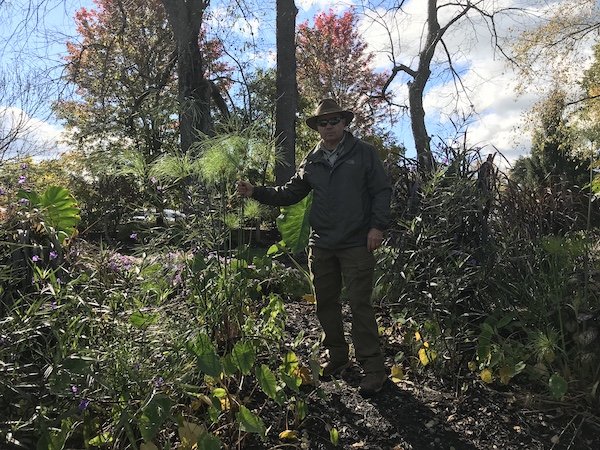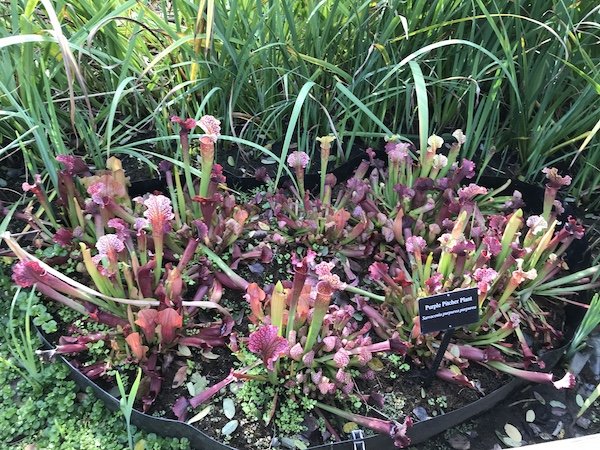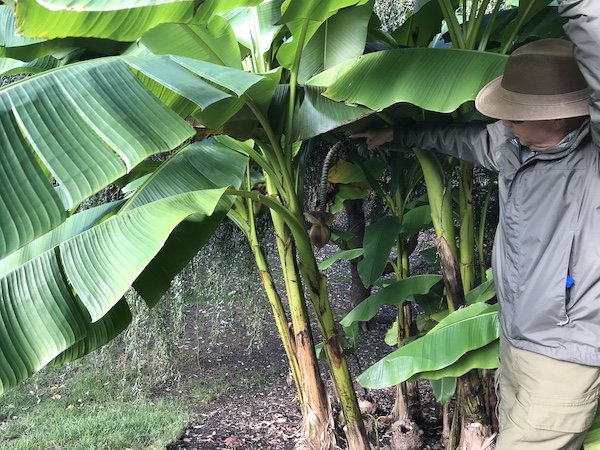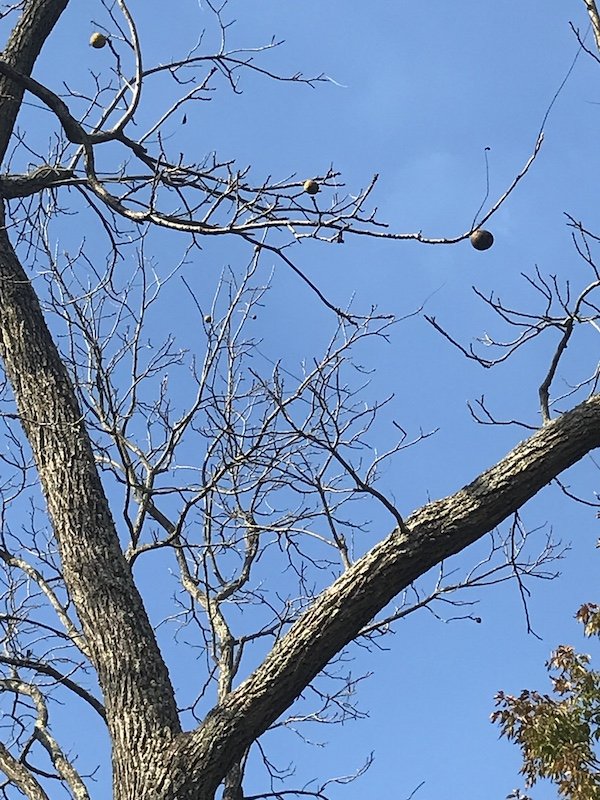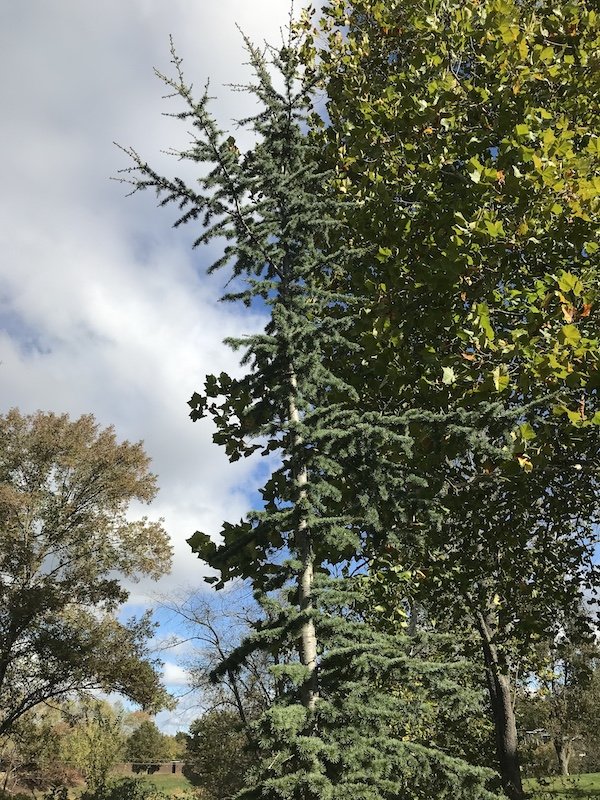Plants of the Bible
A Tour with the Curator of the Creation Museum Gardens
Note: This garden walk originally took place in autumn, so not all the plants we discussed will look the same in spring. However, the gardens offer plenty to see and learn about year-round, with more to come at the conservatory and butterfly house addition to the Creation Museum!
Have you ever heard a flower preaching to passersby on a street corner?
Okay, so maybe that’s not exactly how it works.1 But Romans 1:20 does say that God’s attributes are evident in created things. Because the Bible records the true history of our world, we’d expect creation to reflect that history’s reality. As a result, we can find reminders of the Bible’s truth all throughout the created world—including in flowers.
Take, for instance, the plants in the Creation Museum’s botanical gardens. How do these fascinating florae connect to the history outlined in God’s Word? To find out, I talked to the curator of the gardens, Mr. Dale Spada. He graciously agreed to take me on a version of the tour that he leads guests through, pointing out plants that appear by name in Scripture. Let me invite you on the journey, beginning just outside the entrance to the Creation Museum.
A Testament to Design
As we stood looking towards the gardens, Dale pointed to the pergola framing a waterfall across the lake.
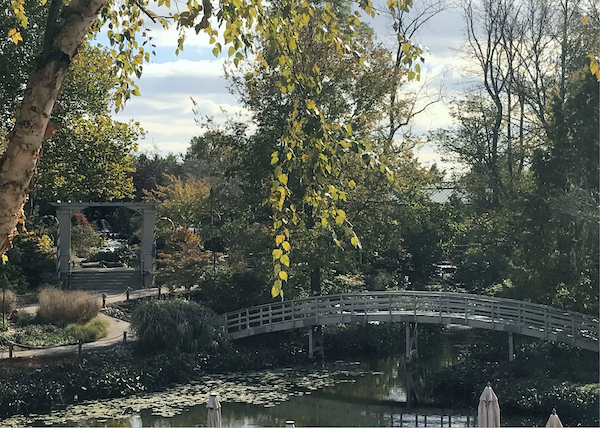
The view looking towards the pergola and falls
“Landscape design takes a lot of forethought,” he said, explaining how the pergola and waterfall composed a view that the museum designers had planned years prior. By analogy, we too are the careful craftsmanship of the Creator.2
With that thought in mind, we continued down the path into the gardens.
Incense Ingredients
“In Exodus 30:34,” Dale said, halting in front of a short, bushy tree, “There’s a recipe for incense. That’s where this tree comes in. It’s a Japanese Styrax. Styrax is the word that translates directly to stacte.”
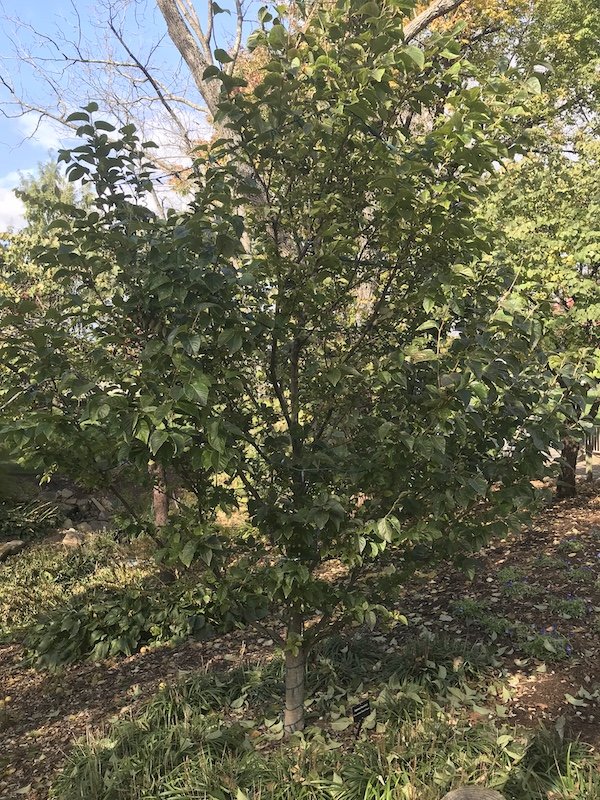
Japanese Snowbell, Styrax japonicus ‘Emerald Pagoda’
The passage where the word stacte appears reads,
The Lord said to Moses, “Take sweet spices, stacte, and onycha, and galbanum, sweet spices with pure frankincense (of each shall there be an equal part), and make an incense blended as by the perfumer, seasoned with salt, pure and holy. (Exodus 30:34–35)
“The stacte in that verse is basically gum that comes out of the tree,” Dale clarified, explaining how the dried gum has been found in archeological excavations. Why dried gum? While the priests needed incense year-round, the gum could only be harvested in certain seasons. Once collected, the stacte could then be dried and kept in storage until needed.
Today, the styrax tree in the botanical gardens stands as just one reminder of how the Bible is a book for the real world, where real people have been interacting with their real Creator throughout real history.
Figs and Thorns
Strolling onwards, we came to another tree with broad, distinctive leaves—a fig tree.
“There’s a number of Scriptures that directly relate to the fig,” Dale remarked.
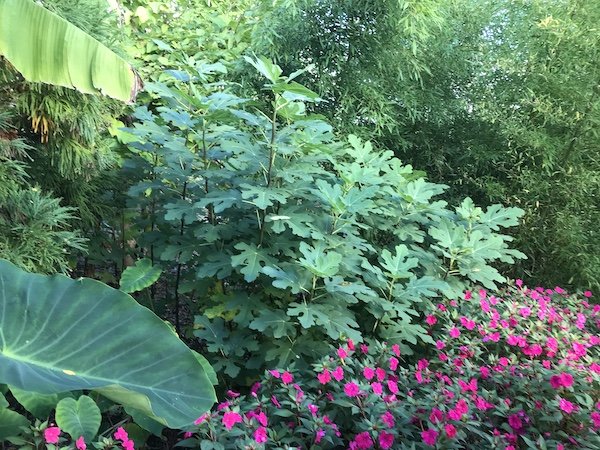
The fig tree
In fact, after the tree of life and the tree of the knowledge of good and evil, the fig is the very first kind of tree that the Bible mentions by name. Genesis 3:7 tells us that, in the Garden of Eden, Adam and Eve tried to sew clothing from fig leaves after their sin opened their eyes to their nakedness. But leaves alone could never cover sin, which separates us from our life-giver, God. That’s why God gave Adam and Eve tunics of skin as temporary coverings instead. The skin from the animals and the death in which it results foreshadowed how Jesus’ death would offer the ultimate covering for human sin.
That sin corrupted all of creation—right down to the plant kingdom. For instance, Genesis 3:18 records that one effect of sin included the ground bringing forth thorns and thistles.
“A thorn is actually a branch that’s not fully developed horticulturally,” Dale explained as we remained by the fig tree. “A spine like that on a cactus is a leaf that’s not fully developed. And a prickle like that on a rosebush is a protrusion of the epidermis, also known as the bark.”
While we can only speculate, it’s possible that God created plants with the genetic potential for thorns and thistles, but that these genes were only switched “on” at the time of the fall. Whatever the details, we know that God had a plan to redeem his thorn-scarred creation from the corruption which fig leaves could not cover. That’s why he sent Jesus.
Interestingly, Jesus himself talked about both figs and thorns. In Matthew 7:15–17, for instance, Jesus warned,
Beware of false prophets, who come to you in sheep’s clothing but inwardly are ravenous wolves. You will recognize them by their fruits. Are grapes gathered from thornbushes, or figs from thistles? So, every healthy tree bears good fruit, but the diseased tree bears bad fruit.
But Jesus didn’t just talk about thorns. Matthew, Mark, and John record how the soldiers who crucified Jesus also tortured him with a crown of thorns—a literal image of our Creator taking the effects of our sin upon himself (Matthew 27:29; Mark 15:17; John 19:2). While fig leaves could not cover that sin even temporarily, the blood of our thorn-scarred Savior washes sin away forever.
Hyssop
Leaving the fig tree, we continued through the gardens, pausing to view a butterfly bush or a cedar of Lebanon until we reached a cluster of plants bearing stalks of purple flowers.
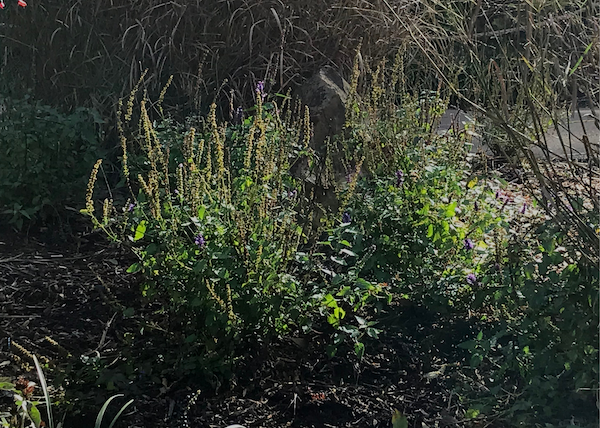
Hyssop
“Hyssop is another one right out of the Bible,” Dale said, citing John’s account of Jesus’s crucifixion:
After this, Jesus, knowing that all was now finished, said (to fulfill the Scripture), “I thirst.” A jar full of sour wine stood there, so they put a sponge full of the sour wine on a hyssop branch and held it to his mouth. (John 19:28–30)
Hyssop also appears—among other places throughout Scripture—in the Passover account recorded in Exodus. On the night that the Israelites were to flee from slavery in Egypt, God had warned that he would strike the firstborn son in every household throughout Egypt as the final plague of judgment for that nation’s sin. But God also provided a way of salvation from this judgment, as Exodus 12:21–23 states:
Then Moses called all the elders of Israel and said to them, “Go and select lambs for yourselves according to your clans, and kill the Passover lamb. Take a bunch of hyssop and dip it in the blood that is in the basin, and touch the lintel and the two doorposts with the blood that is in the basin. None of you shall go out of the door of his house until the morning. For the Lord will pass through to strike the Egyptians, and when he sees the blood on the lintel and on the two doorposts, the Lord will pass over the door and will not allow the destroyer to enter your houses to strike you.
The parallels between the Passover and the gospel are striking—right down to the use of hyssop. The same kind of plant which lifted the Passover lambs’ blood to the doorposts in Egypt is the plant that lifted wine to the Lamb of God on the cross.
The Garden and the Gospel
As we walked back to the Creation Museum, I left with a renewed realization of how nature bears silent witness to the gospel. The care that human gardeners take to landscape creation reminds us how thoughtfully our own designer crafted us. The styrax tree, a source of ingredients for the incense which the Israelites were to burn continuously, reminds us that we too were meant for a continuous relationship with our Creator. But as the fig tree’s leaves remind us, sin severed that relationship in a way that our own efforts could never cover or repair. That sin corrupted the entire realm of nature, as thorns still demonstrate today. Yet the hyssop reminds us that God has provided a lamb, Jesus, whose sacrifice covered sin once for all.
These plants offer just a few examples of how creation connects to the truth of the gospel. From the highest cedar of Lebanon to the humblest flower on a street corner, creation declares God’s glory.
We only need to stop and listen.
Footnotes
- Facts (like our observations about flowers) don’t speak for themselves, but instead must be interpreted. However, creation does declare God’s glory in another sense by displaying the power and ingenuity of its Creator.
- For more examples of God’s design evident throughout creation, see “Design in Nature.”

Answers in Genesis is an apologetics ministry, dedicated to helping Christians defend their faith and proclaim the good news of Jesus Christ.
- Customer Service 800.778.3390
- Available Monday–Friday | 9 AM–5 PM ET
- © 2025 Answers in Genesis


